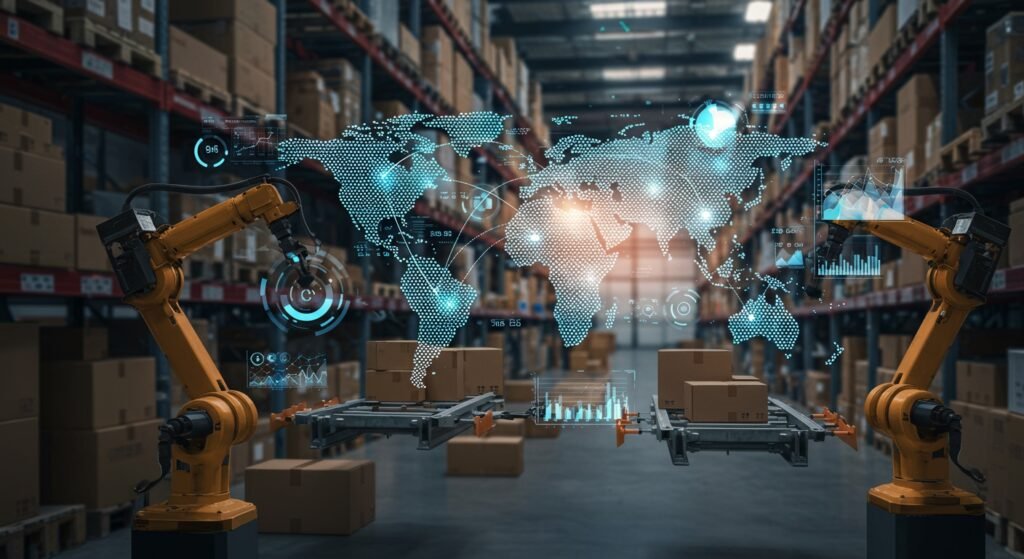Building Resilient Supply Chains with AI and Data Analytics
The global business landscape is more volatile than ever, making supply chain resilience a critical imperative for survival and growth. From natural disasters to geopolitical shifts and economic downturns, disruptions can cripple operations, leading to significant financial losses and reputational damage. In this era of unprecedented uncertainty, traditional, reactive approaches to supply chain management are no longer sufficient. Businesses must proactively build robust, adaptive systems, and the most powerful tools at their disposal are Artificial Intelligence (AI) and advanced data analytics.
This article explores how AI and data analytics are transforming the concept of supply chain resilience, offering strategies to predict, mitigate, and rapidly recover from disruptions.
Table of Contents
- The Evolving Landscape of Supply Chain Resilience
- Leveraging AI for Enhanced Supply Chain Resilience
- Key Benefits of AI-Driven Supply Chains
- Implementing AI for a More Resilient Supply Chain: Practical Steps
- Conclusion: The Future is Resilient
The Evolving Landscape of Supply Chain Resilience
For decades, supply chains focused primarily on efficiency and cost reduction. While important, this singular focus often came at the expense of robustness. Today, the definition of supply chain resilience has expanded to encompass the ability to anticipate potential disruptions, adapt quickly when they occur, and recover swiftly to maintain business continuity. This proactive stance requires deep insights, which can only be unlocked through sophisticated data processing and analysis.
Traditional Challenges vs. Modern Complexities
Historically, supply chain managers dealt with identifiable risks like supplier failure or logistics delays. Modern supply chains face a myriad of interconnected, often unforeseen challenges: global pandemics, cyberattacks, rapid shifts in consumer demand, and trade wars. These complexities demand a system that is not only robust but also intelligent and agile.
Why AI and Data Analytics are Crucial
AI and data analytics provide the intelligence needed to navigate this complex environment. They enable organizations to move beyond reactive problem-solving to predictive modeling and prescriptive actions. By analyzing vast datasets—from weather patterns and news sentiment to market trends and sensor data—AI can identify subtle patterns and impending risks that human analysts might miss, thereby significantly enhancing supply chain resilience.
Leveraging AI for Enhanced Supply Chain Resilience
The application of AI in supply chain management is multifaceted, impacting every stage from forecasting to delivery.
Predictive Analytics for Risk Identification
AI algorithms can process historical data, real-time feeds, and external factors to predict potential disruptions before they materialize. This includes forecasting demand fluctuations, identifying at-risk suppliers, predicting equipment failures, and even anticipating port congestion or weather-related delays. Such foresight is invaluable for strategic planning and preemptive action, bolstering supply chain resilience.
Real-Time Monitoring and Anomaly Detection
With IoT sensors, GPS tracking, and continuous data feeds, AI systems can monitor the entire supply chain in real-time. Any deviation from the norm—a delayed shipment, an unexpected inventory drop, or unusual supplier activity—can trigger immediate alerts. This allows for rapid response and mitigation, minimizing the impact of unforeseen events.
Automated Decision-Making and Optimization
AI can go beyond alerts, recommending optimal actions or even executing them autonomously. This could involve re-routing shipments, adjusting production schedules, or reallocating resources in response to a disruption. Machine learning models continuously learn and refine these decisions, leading to increasingly efficient and resilient operations.
Supplier Management and Diversification
AI helps evaluate supplier reliability, performance, and risk profiles. By analyzing factors like financial stability, geopolitical exposure, and historical performance, businesses can make informed decisions about supplier diversification, reducing dependence on single sources and improving overall resilience.
Key Benefits of AI-Driven Supply Chains
Implementing AI and data analytics yields tangible benefits for supply chain operations, fundamentally improving their ability to withstand shocks.
| Benefit Category | Description | Impact on Resilience |
|---|---|---|
| Enhanced Visibility | Real-time, end-to-end view of the supply chain. | Faster identification of issues, proactive intervention. |
| Predictive Capabilities | Anticipate disruptions before they occur. | Minimizes surprise events, enables strategic planning. |
| Agility & Adaptability | Quickly adjust to changing conditions. | Reduced downtime, maintained customer satisfaction. |
| Cost Efficiency | Optimize inventory, logistics, and operations. | Reduced waste, improved financial stability during crises. |
| Improved Collaboration | Better data sharing and coordination with partners. | Stronger ecosystem, collective problem-solving. |
Implementing AI for a More Resilient Supply Chain: Practical Steps
Embarking on the AI journey requires a strategic approach.
Data Infrastructure and Integration
The foundation of any AI initiative is robust, clean, and integrated data. Businesses must invest in systems that can collect, store, and process vast amounts of data from various sources across the supply chain. This often involves migrating to cloud-based solutions and implementing data lakes or warehouses.
Pilot Programs and Scalability
Start with manageable pilot projects to demonstrate the value of AI. Focus on specific pain points, such as demand forecasting or inventory optimization. Once successful, these solutions can be scaled across the organization, iteratively building out a comprehensive AI-driven supply chain. For more insights into leveraging data, explore our guide to data analytics.
Employee Training and Adoption
Technology alone is not enough. Companies must invest in training their workforce to understand and utilize AI tools effectively. This includes upskilling existing staff and potentially hiring new talent with AI and data science expertise. A culture that embraces data-driven decision-making is paramount for success.
Conclusion: The Future is Resilient
In a world characterized by constant change, building supply chain resilience is no longer optional; it’s a strategic imperative. AI and data analytics offer the intelligence, foresight, and agility needed to transform reactive supply chains into proactive, self-optimizing networks. By embracing these technologies, businesses can not only mitigate risks but also uncover new efficiencies and opportunities, ensuring their sustained competitiveness and success in an unpredictable future. For further reading on global supply chain trends, you might find valuable information on sites like the World Bank’s supply chain resources.


